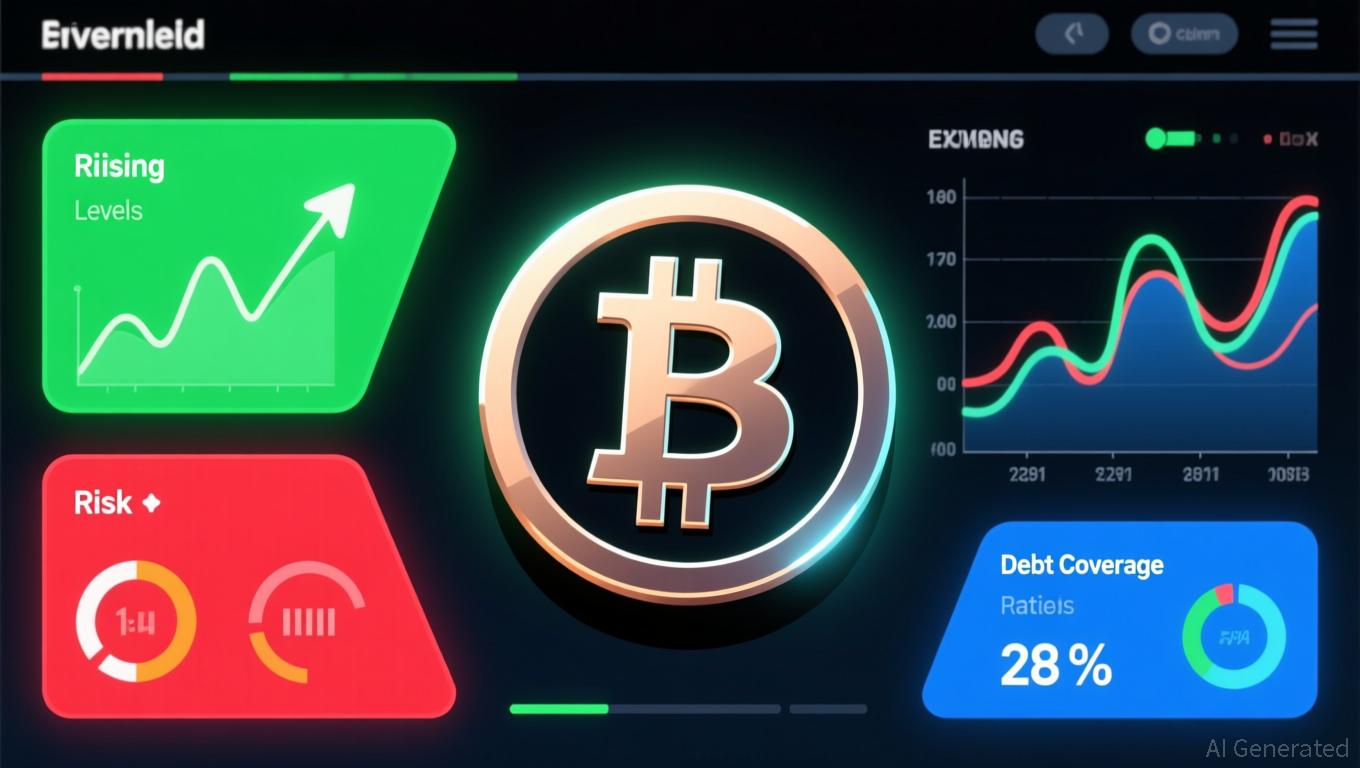Navigating the Ups and Downs of Cryptocurrency: Does USDT Remain a Secure Refuge?
- Tether's USDT faces stability risks as S&P downgrades its rating to "weak" due to high-risk reserves like bitcoin and gold , now restricted by new U.S. regulations. - The 2025 crypto crash exposed systemic vulnerabilities, with algorithmic stablecoins depegging and triggering panic, despite USDT maintaining its $1 peg. - Regulatory frameworks like the EU's MiCAR and U.S. GENIUS Act mandate reserve transparency and liquidity standards, forcing Tether to launch a compliant alternative, USAT. - Investor beh
USDT’s Stability: Is It Just an Illusion?
USDT, which leads the stablecoin market by share, has come under greater scrutiny regarding the makeup of its reserves.
The vulnerability of USDT’s peg became evident during the crypto “black swan” crash in October 2025, when
Regulatory Oversight and Systemic Threats
Authorities are now treating stablecoins as integral to the financial system rather than fringe assets.
In turn, the EU’s Markets in Crypto-Assets Regulation (MiCAR) and the U.S. GENIUS Act are transforming the stablecoin sector.
Investor Psychology and Market Reactions
The events of October 2025 also demonstrated how psychological biases can worsen stablecoin volatility.
These psychological effects are magnified by the interconnected nature of digital assets.
Leverage and Debt Management Challenges
Excessive leverage and liquidity pressures have further revealed weaknesses in stablecoin systems. During the 2025 turmoil,
Regulators are now urging stablecoin issuers to hold high-quality liquid assets (HQLA), such as cash and short-term government bonds, to support redemption stability.

Does USDT Remain a Safe Haven?
The answer depends on how risks are weighed against new opportunities. While
For those investing in stablecoins, diversification and prudent risk management are essential.
Final Thoughts
USDT’s status as a safe haven in 2025 is far from straightforward. Despite holding a near-$1 peg and a large share of the market, its stability now depends on regulatory adaptation, reserve openness, and investor sentiment. As the digital asset sector matures, the boundary between innovation and systemic risk becomes increasingly blurred. For investors, successfully navigating this environment means closely monitoring stablecoin fundamentals and understanding the regulatory and psychological forces that will shape their future.
Disclaimer: The content of this article solely reflects the author's opinion and does not represent the platform in any capacity. This article is not intended to serve as a reference for making investment decisions.
You may also like
Bitcoin Updates: PayPal Offers $1.3 Million in Bitcoin Prizes to Encourage Widespread Crypto Use
- PayPal launched a $1.386M Bitcoin raffle for U.S. users through December 21, offering weekly prizes up to $100,000 to boost crypto adoption. - Participants gain entries via crypto purchases (BTC, ETH, etc .) or mail-in submissions, with 1,008 winners selected across three prize tiers. - The promotion excludes PYUSD transactions due to regulatory constraints and requires verification for higher-value prizes. - PayPal emphasizes compliance with U.S. sweepstakes laws while highlighting crypto's growing inte
Ethereum News Update: BitMine Invests $60M in Ethereum Despite $4B in Losses, Anticipates Swift Market Rebound
- BitMine adds $60M in ETH despite $4B in unrealized losses, holding 3% of Ethereum's circulating supply. - Ethereum drops 29% in a month as $689M exits funds, reflecting broader crypto risk-off sentiment and a DNS hijacking incident. - CEO Thomas Lee cites "liquidity shock" as cause, predicting V-shaped recovery akin to 2022 post-FTX rebound. - Firm shifts to active yield generation via MAVAN staking, aligning with industry trends to offset asset depreciation. - Institutional accumulation and structural d
Bitcoin Updates Today: MSTR’s Bitcoin Leverage—A Repeat of 2008 or a Robust Approach?
- MicroStrategy introduces BTC Rating dashboard to reassure investors, showing 5.9x debt coverage even if Bitcoin drops to its $74,400 cost basis. - Institutional investors cut $5.38B in MSTR holdings as spot Bitcoin ETFs gain traction, eroding the stock's premium over net asset value. - $20B convertible debt structure poses risks, with $2.8B forced outflows possible if MSCI excludes MSTR from major indices in January 2026. - CEO Michael Saylor defends "hodl strategy" and $500M software business , but crit

Trump’s Entire Crypto Portfolio Sits on Ethereum, New Data Shows
Quick Take Summary is AI generated, newsroom reviewed. Arkham snapshot reveals an $8.3M ETH-only allocation. Trump-linked wallets historically held 92–95% ETH. Community views ETH as a leading global settlement layer. The move reinforces Ethereum’s growing dominance in 2025.References X Post Reference